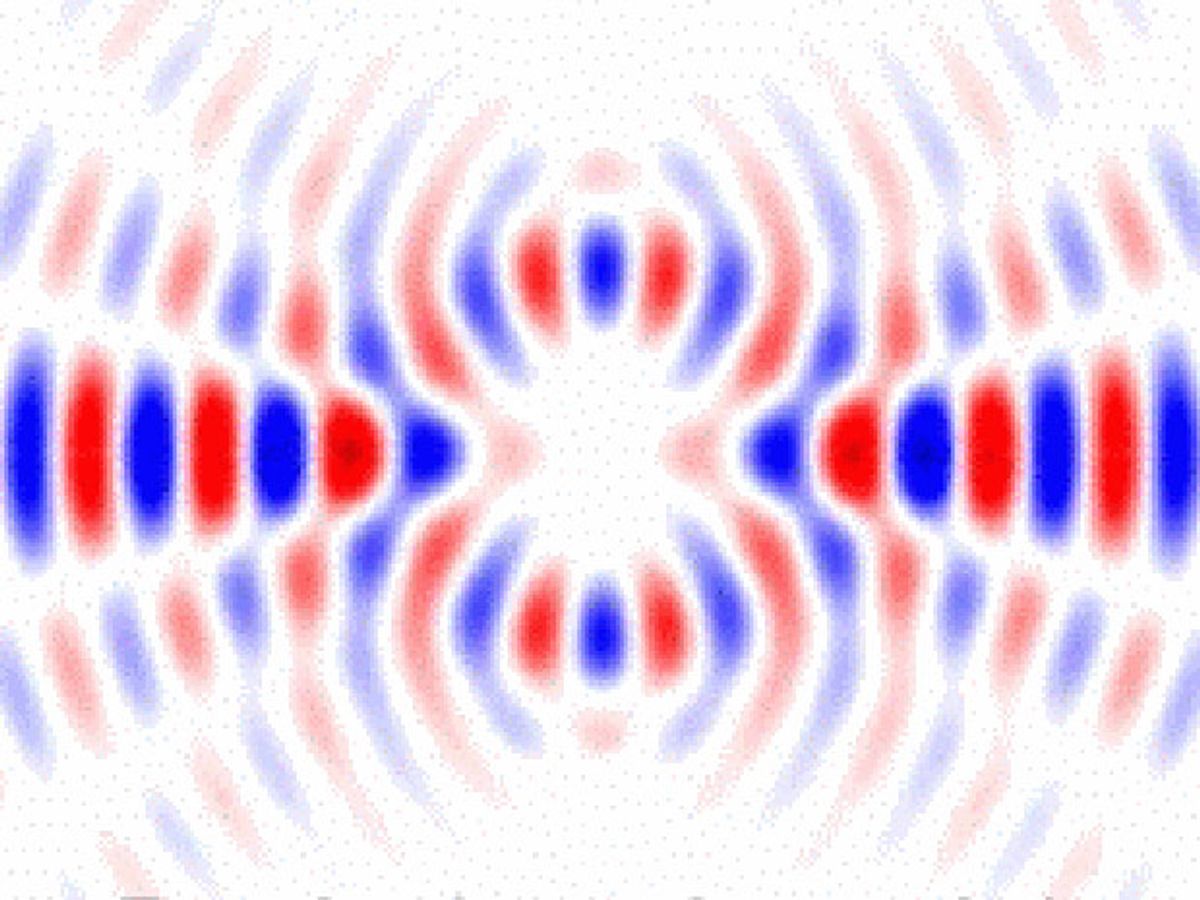Scientists have developed a method to bend sound waves as they travel through open air, and can even create an acoustic “bottle” that can trap and hold tiny particles. The method could improve cell sorting, sharpen ultrasound images, even lead to a sonic cloaking device.
The method, developed in the laboratory of Xiang Zhang, professor of mechanical engineering at the University of California in Berkeley, requires adjusting the phase and amplitude of the sound coming from each of dozens of closely spaced speakers. With precise calculations, the differences among the speakers produce an interference pattern that causes a beam of sound to bend in a desired way. That includes bending the waves so the sound travels around an object and then continues on its original path. The waves can be manipulated to whatever extent is required, says Jie Zhu, who coauthored the Nature Communications paper describing the work when he was a postdoc in Zhang’s lab.
“First you have to know what you want to achieve, then, using our method, you can construct the shape at the source,” says Zhu, now assistant professor of mechanical engineering at the Hong Kong Polytechnic University.
The ability to direct sound around objects in its path could improve ultrasound imaging by allowing sound waves to skirt bones that would otherwise be in the way of what they were trying to see.
The technique grew out of work Zhang’s lab has done on metamaterials, which contain periodic structures that cause light or sound waves to move in unusual ways. Zhang and others have used metamaterials to create cloaking devices to hide objects from specific frequencies of light or sound. Zhu says that using the same principles, but without the metamaterial, allows them to achieve similar feats in free space, making it much more attractive for practical use. “Most applications happen in the air or in liquid,” he says. “Most applications don’t allow us to change the medium.”
Neil Savage is a freelance science and technology writer based in Lowell, Mass., and a frequent contributor to IEEE Spectrum. His topics of interest include photonics, physics, computing, materials science, and semiconductors. His most recent article, “Tiny Satellites Could Distribute Quantum Keys,” describes an experiment in which cryptographic keys were distributed from satellites released from the International Space Station. He serves on the steering committee of New England Science Writers.




